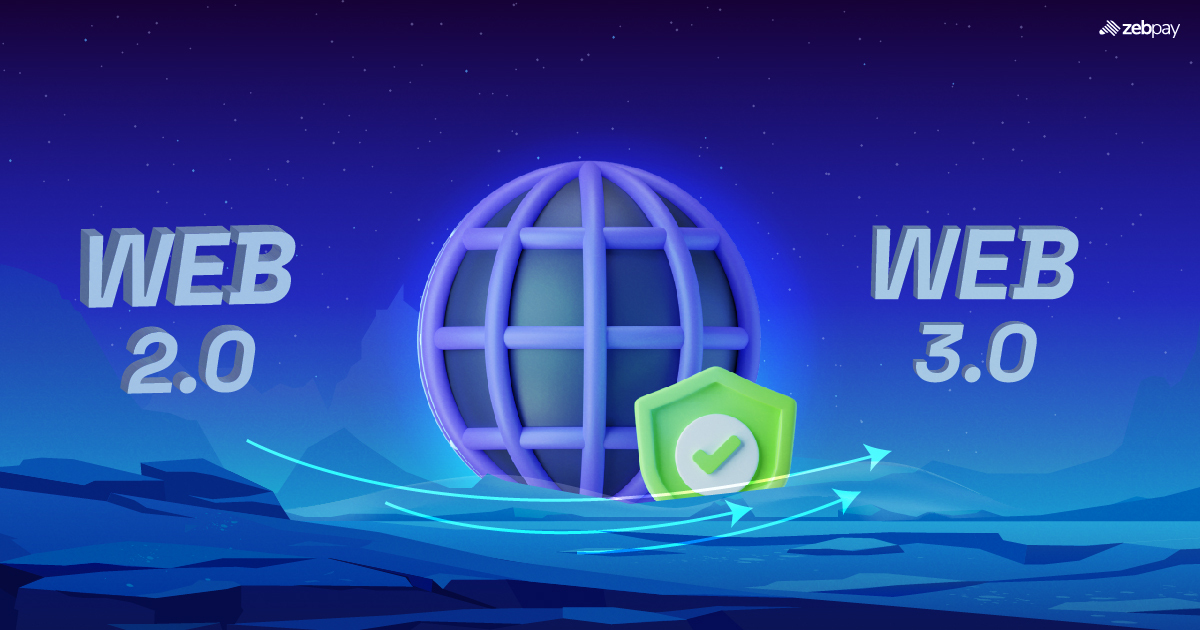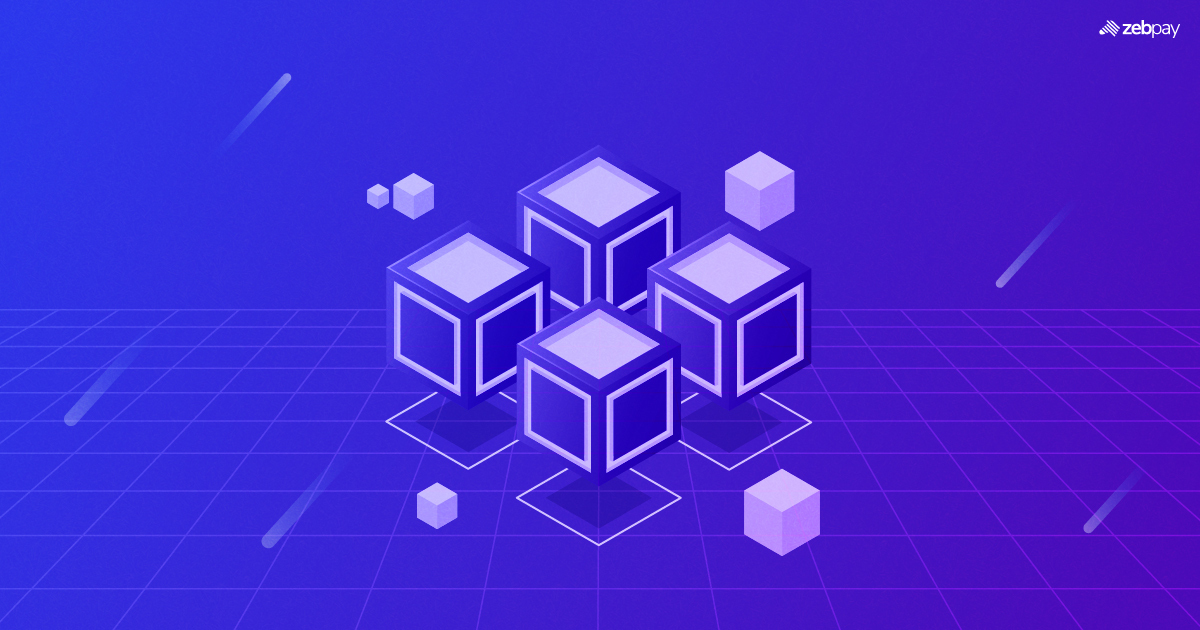The internet has come a long way since its beginning. The transition from Web1 to Web2 brought a new era of interactivity and user-generated content. However, Web2 has limitations, such as data privacy, security, and centralization concerns. Therefore, a more decentralized web called Web3 is in demand.
Web3 is the next step for the internet, offering a secure, transparent, and decentralized framework using blockchain technology. In this guide, we’ll explore the benefits of Web3 and provide a step-by-step guide on how to transition from Web2 to Web3 by 2023.
Web2 to Web3 Transition: Why Your Business Needs to Adapt?
The shift from Web2 to Web3 is no longer a matter of if, but when. The decentralised web offers significant benefits over Web2, including:
- Increased security: The decentralised nature of Web3 means that there is no central point of control, making it more secure than Web2.
- Enhanced transparency: The use of blockchain technology in Web3 allows for more transparency, traceability and accountability, which can help to build trust and confidence in your organization.
- Improved data privacy: Web3 is designed to be more privacy-focused, with the use of decentralised identity and data management protocols.
- Access to new markets: By leveraging Web3 technologies such as smart contracts and crypto assets, your organization can tap into new markets and revenue streams.
Read more: What is Web 3.0
Understanding the Benefits and Opportunities of the Decentralised Web
To fully appreciate the benefits of Web3, it’s important to understand the technologies that underpin it. Here are three key benefits of Web3 technologies.
Decentralisation
One of the key benefits of Web3 is its decentralised nature. Traditional Web2 applications are hosted on centralised servers, which are controlled by a single entity. By contrast, Web3 applications are decentralised, with no central point of control. This means that there is no single point of failure, making it more resilient to attacks and malfunctions.
Smart Contracts
Smart contracts are digital contracts with self-executing sets of code. The terms of the agreement between buyer and seller are directly written into the contract, which lives on a blockchain. They allow for automated transactions to take place without the need for intermediaries. This can save time, reduce costs and increase efficiency.
Crypto assets
Crypto assets are a digital form of money. They use encryption to create a secure and transparent environment for payments. Crypto tokens offer several benefits over traditional currencies, like faster transaction times, lower fees and increased security.
A Step-by-Step Guide to Moving Your Organization to Web3 by 2023
Moving from Web2 to Web3 can seem daunting, but with the right approach, it can be a smooth and seamless transition. Here are the key steps to take:
From Smart Contracts to Crypto assets: Leveraging Key Components of Web3 Development
To fully leverage the benefits of Web3, your organization needs to start by understanding the key components of Web3 development. This includes smart contracts, crypto assets, decentralised identity protocols and more. Regardless of what you may implement, it is crucial to understand these fundamentals for a successful transition.
Building a Web3 Architecture: How to Leverage Blockchain for Your Business?
To build a Web3 architecture, your organisation needs to start by identifying the right Web3 platforms and technologies for your business. This can include blockchain platforms such as Ethereum, Polkadot or Solana, as well as decentralised storage solutions like IPFS and Filecoin.
Designing a Web3 Infrastructure and Identifying the Right Web3 Platforms for Your Organization
Once you’ve identified the right Web3 platforms and technologies for your business, design an infrastructure that can support your organization’s goals and objectives. This may involve creating a new architecture from scratch or integrating Web3 technologies into existing tools.
Read more: Web 3.0 vs Web 2.0
How to Transition from Web2 to Web3?: Best Practices and Strategies

Transitioning from Web2 to Web3 requires careful planning and execution. Here are some best practices and strategies to keep in mind:
- Start small: Don’t try to transition your entire organization to Web3 at once. Start with a small pilot project to test the waters and build momentum.
- Embrace collaboration: Web3 is all about collaboration and community. Work with other organizations and developers to share knowledge, resources, and best practices.
- Stay agile: Web3 is still an emerging technology, and new platforms and tools are constantly being developed. Stay agile and flexible to adapt to changes and opportunities as they arise.
Identifying Key Challenges and Pitfalls, and Leveraging Benefits of Decentralized Web Technologies
As with any major technology transition, there are bound to be challenges and pitfalls along the way. These can include technical hurdles, regulatory uncertainty and user adoption issues.
However, by leveraging the benefits of decentralised Web technologies, you can overcome these challenges and realize the full potential of Web3. These include faster service times and transparency, which builds customer confidence.
Conclusion
The shift from Web2 to Web3 is already underway, and organisations that fail to adapt risk being left behind. By embracing the benefits of Web3 and following the steps outlined in this guide, your organisation can stay ahead of the curve and thrive in the decentralized web of the future.
You can read more about Web 3.0, Crypto and blockchain on ZebPay blogs. Join the millions already using ZebPay.
FAQs on Transitioning from Web2 to Web3
What Is Web3 And How Is It Different From Web2?
Web3 is the next evolution of the internet, offering a more secure, transparent and decentralized framework through blockchain technology. On the other hand, Web2 is the current form of the Internet. It is known for its centralized architecture and focuses on user-generated content.
Why Should My Organization Transition From Web2 To Web3?
Transitioning from Web2 to Web3 offers several benefits, including increased security, enhanced transparency, improved data privacy and access to new markets.
What Are Some Of The Key Technologies That Underpin Web3?
Some of the key technologies that underpin Web3 include blockchain, smart contracts, decentralized protocols and crypto assets.
What Are Some Best Practices For Transitioning From Web2 To Web3?
Some best practices for transitioning from Web2 to Web3 include starting small, collaborating with experienced players, staying agile, and identifying key pitfalls.







